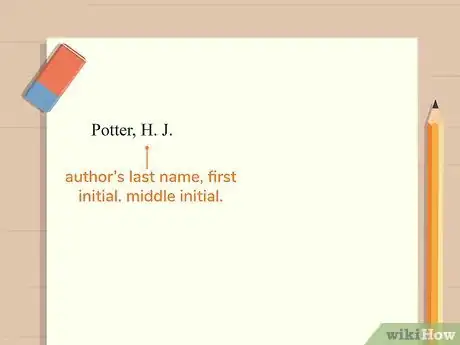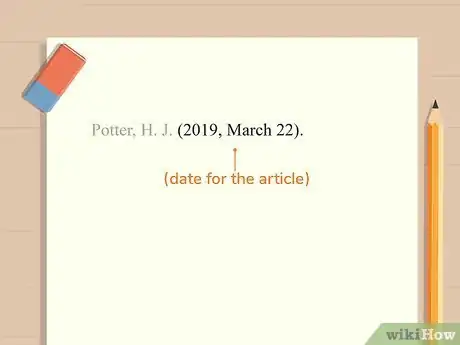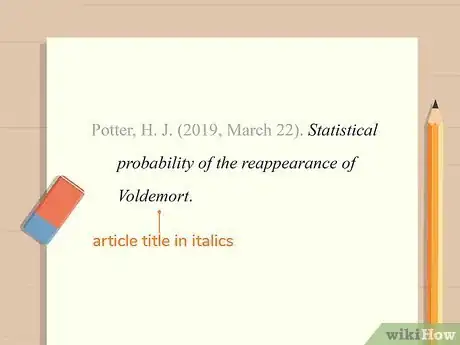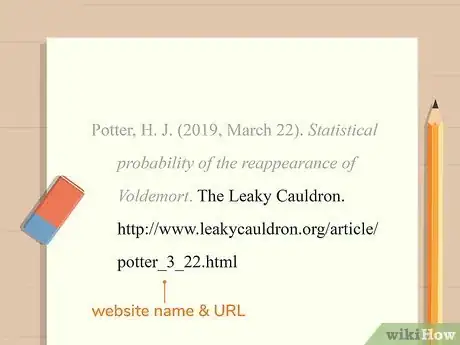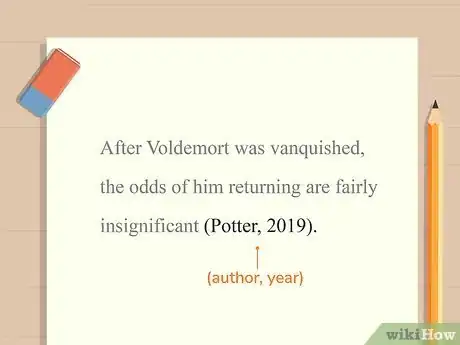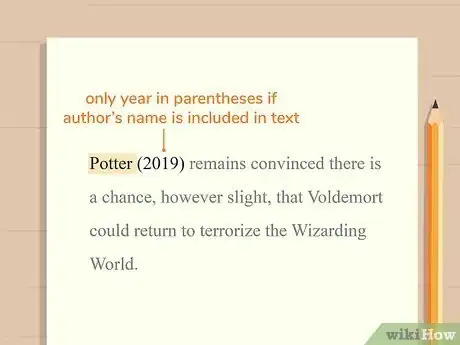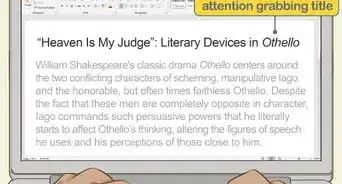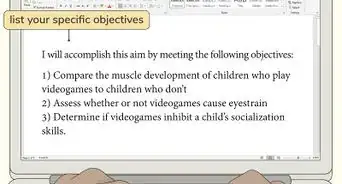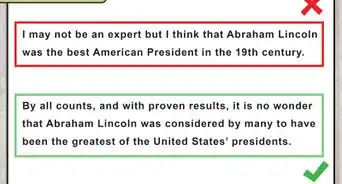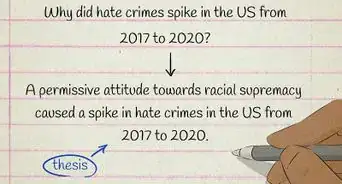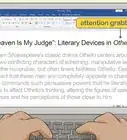This article was co-authored by wikiHow staff writer, Jennifer Mueller, JD. Jennifer Mueller is a wikiHow Content Creator. She specializes in reviewing, fact-checking, and evaluating wikiHow's content to ensure thoroughness and accuracy. Jennifer holds a JD from Indiana University Maurer School of Law in 2006.
This article has been viewed 47,978 times.
Learn more...
If you're writing a research paper, it's likely that many of the articles you use as sources will come from the internet. If you're using the citation style of the American Psychological Association (APA), the format of your Reference List entry will differ if you're citing an online article as opposed to a print article. Any time you quote or paraphrase from the source, you'll also need to include an in-text citation at the end of the sentence.
Steps
Reference List Entry
-
1Start your entry with the name of the author. Type the author's last name first, followed by a comma, then their first initial, followed by a period. If the author's middle initial is given, add it after the first initial, also followed by a period.[1]
- Example: Potter, H. J.
- If the article was written by a corporation or organization, simply list that name as the author. If you see an article on a corporation or organization's website with no specific author attributed, use the corporation or organization as the author.
-
2Provide a date for the article in parentheses. For online articles, provide as precise a date as possible. Use the date the article was most recently updated, if that's provided. Type the year first, followed by a comma. Then add the month and the date. Don't abbreviate months. Place a period outside the closing parenthesis.[2]
- Example: Potter, H. J. (2019, March 22).
Advertisement -
3List the title of the article in italics. Type the full title of the article in sentence case, capitalizing only the first word and any proper nouns in the title. If there's a subtitle, type a colon after the title followed by the subtitle, also in sentence case. Type a period at the end.[3]
- Example: Potter, H. J. (2019, March 22). Statistical probability of the reappearance of Voldemort.[4]
-
4Close with the name of the website and a direct URL. Type the name of the website followed by a period. After the period, add a direct URL for the article. Don't place a period at the end of the URL.[5]
- Example: Potter, H. J. (2019, March 22). Statistical probability of the reappearance of Voldemort. The Leaky Cauldron.[6] http://www.leakycauldron.org/article/potter_3_22.html
APA Reference List Format — Web Article
Author, A. A. (Year, Month Date). Title of article in sentence case. Site. URL
In-Text Citation
-
1Include the author and year for a standard parenthetical citation. At the end of any sentence in which you mention or paraphrase the source, add a parenthetical citation with the author's last name, followed by a comma, then the year the article was published. Your parenthetical citation goes inside the sentence's closing punctuation.[7]
- For example, you might write: After Voldemort was vanquished, the odds of him returning are fairly insignificant (Potter, 2019).[8]
Tip: If you have several different articles written by the same author in the same year, include the title of the articles in your parenthetical citations to distinguish them from one another.
-
2Provide the year in parentheses if you include the author's name in your text. As you're writing, it might make more sense to use the author's name in the text of your paper, in which case you don't have to repeat it in a parenthetical citation. Instead, add a parenthetical with the year immediately after the author's name.[9]
- For example, you might write: Potter (2019) remains convinced there is a chance, however slight, that Voldemort could return to terrorize the Wizarding World.[10]
-
3Add a page number if you quote the source directly. Typically, if you include a direct quote, you also need a pinpoint citation that allows your reader to go straight to the source and read the original quote. In a regular parenthetical citation, place a comma after a year, then the abbreviation "p." (for a single page) or "pp." (for a page range), followed by the page or pages where the quote appears. With direct quotes, the parenthetical citation occurs outside the closing quotation marks but inside the closing punctuation for the sentence.[11]
- For example, you might write: Although the Wizarding World faces many other threats, the return of Voldemort is an outside possibility that witches and wizards "ignore at their peril" (Potter, 2019, p. 7).[12]
- Follow the same format with direct quotes as you would with a paraphrase if you include the author's name in your text. For example, you might write: Despite the horror inflicted and lives lost, Potter (2019) insists that "many would actually rejoice if Voldemort were to return" (p. 4).
- Many online articles don't have page numbers. If that's the case, you can use a paragraph number or the title of a section to help your readers locate the quoted material more quickly. For example, you might write: Despite the relatively low chance that Voldemort will return, all witches and wizards "remain alert for subtle signs of the Dark Lord's possible resurgence" (Potter, 2019, para. 9).[13]
References
- ↑ https://columbiacollege-ca.libguides.com/apa/websites
- ↑ https://columbiacollege-ca.libguides.com/apa/websites
- ↑ https://owl.purdue.edu/owl/research_and_citation/apa_style/apa_formatting_and_style_guide/reference_list_electronic_sources.html
- ↑ https://libraryguides.vu.edu.au/apa-referencing/7Webpages
- ↑ https://owl.purdue.edu/owl/research_and_citation/apa_style/apa_formatting_and_style_guide/reference_list_electronic_sources.html
- ↑ https://apastyle.apa.org/style-grammar-guidelines/references/examples/webpage-website-references
- ↑ https://guides.libraries.psu.edu/apaquickguide/intext
- ↑ https://owl.purdue.edu/owl/research_and_citation/apa_style/apa_formatting_and_style_guide/in_text_citations_the_basics.html
- ↑ https://guides.libraries.psu.edu/apaquickguide/intext
